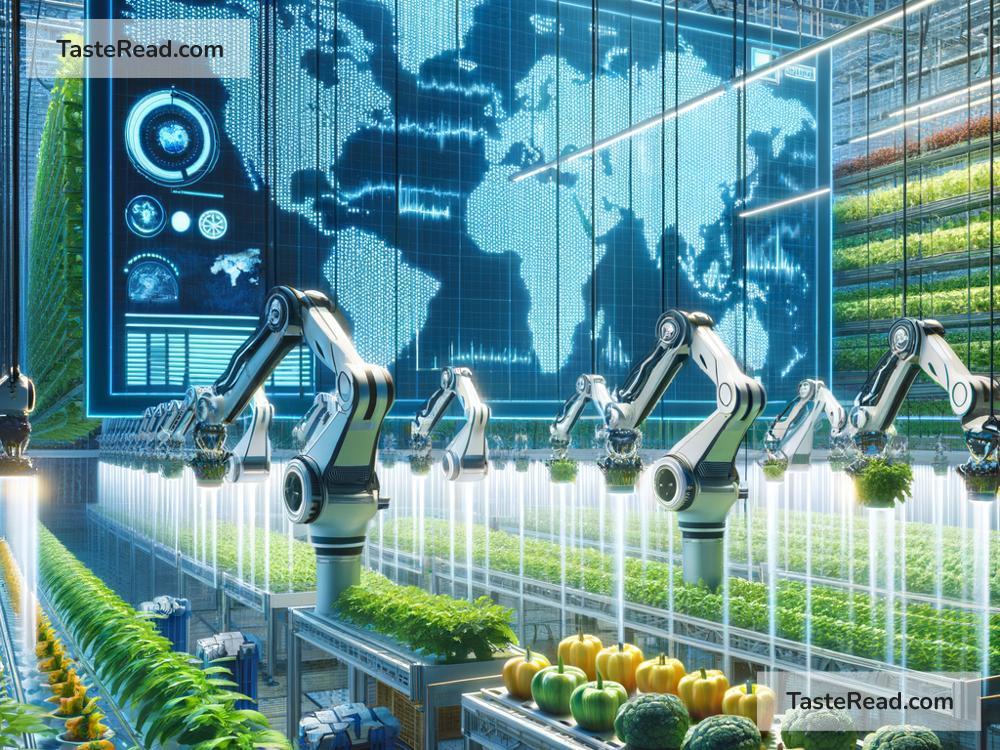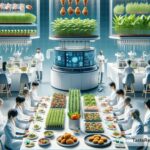The Future of Food and Global Trade: What Lies Ahead?
Food is one of humanity’s most basic needs, yet its production and distribution are growing more complex as the world changes. With growing populations, environmental challenges, and advancements in technology, the future of food and global trade is set to undergo dramatic shifts. Let’s explore what we might see in the coming years in simple terms.
Challenges Facing Food Systems
The global food system has always been influenced by geography, climate, and economics. However, in recent years, new challenges have emerged:
-
Climate Change: Rising temperatures, unpredictable weather, and natural disasters are affecting crop yields around the world. Some areas may become unsuitable for growing certain foods that were once staples. For example, droughts and floods are disrupting rice and wheat production.
-
Population Growth: The world’s population is expected to reach nearly 10 billion by 2050. Feeding this many people will require major changes to the way food is produced and distributed. Simply growing more food like we’ve done in the past won’t be enough.
-
Scarcity of Resources: As farming relies on land, water, and energy, these resources are becoming harder to find in some regions. Overfarming, deforestation, and pollution are also making it harder to grow crops sustainably.
-
Supply Chain Disruptions: Global trade connects farmers, manufacturers, and consumers across the world, but this system isn’t perfect. For example, conflicts between countries, shipping delays, and pandemics can disrupt the movement of food, leading to shortages and higher prices.
Technological Innovations to Feed the Future
Despite these challenges, technology offers hope in ensuring everyone has enough to eat. Here are some exciting innovations that could change the way we grow, sell, and consume food:
-
Vertical Farming: Imagine farms inside tall buildings rather than sprawling fields. These are called vertical farms, and they use less land, water, and pesticides. Companies are already growing crops like lettuce and strawberries in controlled indoor environments that use LED lighting instead of sunlight.
-
Lab-Grown Meat: Scientists are creating meat in laboratories using animal cells, instead of raising livestock. This meat looks, tastes, and feels like the real thing, but requires fewer resources. Lab-grown meat could reduce the environmental harm caused by traditional farming, such as greenhouse gas emissions.
-
Precision Agriculture: Farmers are using drones and sensors to monitor their fields. By collecting precise data, they can apply the right amount of water, fertilizers, and pesticides to individual plants, saving resources and improving crop yields.
-
Alternative Proteins: Plant-based meat substitutes like tofu, jackfruit, and pea protein are growing in popularity. Other innovative solutions, such as insect-based protein and algae, could also become key sources of food in the future.
-
Biotechnology: Genetically modified crops (GMOs) are being designed to resist pests, tolerate harsh climates, and grow faster. These modifications could make food production more efficient and less prone to failure.
Changing the Way We Trade Food Globally
Global trade is critical for food security. Many countries depend on imports for staples like grains, fruits, and seafood—they wouldn’t have enough food without trade. However, the way food moves between countries is expected to change in the future.
-
Regional Trade Agreements: As the world becomes more connected, countries might enter into closer partnerships. For example, neighboring nations might form special agreements for food trade to reduce shipping costs and support local economies.
-
Technology in Trade: Digital platforms are helping farmers from small villages sell their products to buyers halfway across the world. Blockchain technology, which ensures transparency and trust, can help prevent fraud in the food trade.
-
Self-Sufficiency: Some countries are trying to become more self-sufficient, meaning they want to grow enough food to feed their own population instead of relying heavily on imports. This could reduce the strain on global trade but might lead to higher prices in some cases.
-
Food Miles Awareness: People around the world are paying closer attention to “food miles,” which measure how far food travels from farm to plate. Foods imported from distant countries often have a larger carbon footprint. In the future, governments may encourage eating locally grown foods to reduce environmental impact.
What Can We Do?
The food system isn’t just about farmers or technology—each of us plays a role in shaping its future. Here are a few everyday actions we can take:
-
Reduce Food Waste: Wasting less food means we use fewer resources and reduce the strain on global supply chains.
-
Support Local Farmers: Buying from local markets helps small-scale farmers and reduces the carbon footprint of our meals.
-
Try New Foods: Exploring alternatives like plant-based proteins or insect-based snacks can help reduce the demand for resource-heavy foods like beef.
-
Stay Informed: Educate yourself about where your food comes from. Awareness is the first step toward making better choices.
Conclusion
The future of food and global trade is full of possibilities. While there are significant challenges like climate change and population growth, advancements in technology and sustainable practices provide hope. Whether it’s farming indoors, eating lab-grown meat, or improving global trade systems, we’re likely to see revolutionary changes. By working together—governments, businesses, and individuals—we can create a future where everyone has access to safe, nutritious, and affordable food.
The choices we make today will shape the world of tomorrow. So let’s embrace innovation and sustainability while keeping our eye on what truly matters: ensuring that every person on the planet has enough to eat.


